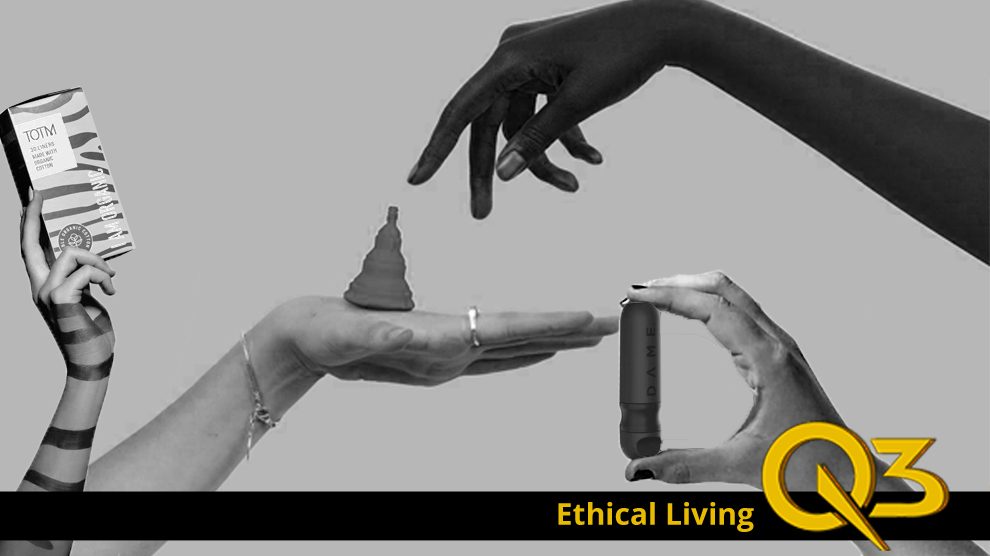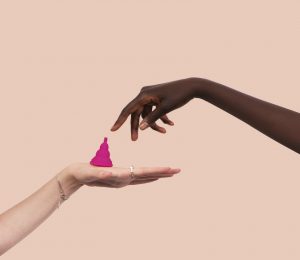By Samantha Harford
IÔÇÖll be honest, whether dealing with heavy bleeding, severe menstrual cramps or the awkwardness of asking a stranger in the public toilets if you could borrow a tampon ÔÇö the environment might be the last thing on your mind whilst youÔÇÖre on your period. Having struggled with periods and their side effects myself for the last ten-or-so years, I can tell you that there have been times when IÔÇÖve flushed a tampon or bought a non-organic sanitary towel without thinking much of it. TheyÔÇÖre an essential product for me, so I would kind of just shrug my shoulders when guiltily buying my Tampax Pearls thinking ÔÇ£I have to buy these ÔÇô I have no choiceÔÇØ. Yet I scorn myself for using disposable takeaway cups and straws, so why donÔÇÖt I do the same for these? The average person uses approximately 240 pads and/or tampons per year ÔÇö thatÔÇÖs 9,600 used for their entire menstrual cycle. I was pretty shocked when I read this statistic; having used applicator tampons for most of my teens, I hadnÔÇÖt ever considered how detrimental the waste IÔÇÖm producing actually is. It takes around 500-800 years for these to decompose, all the while leaking toxic chemicals into the earth. Not good.
But fear not, this article isnt going to end with all the ways our menstrual cycle kills the planet; because it doesnt have to. Honestly, these sanitary products are only so bad for the environment because corporate companies havent ever felt the need to redesign and consider more sustainable alternatives. Luckily for us, there are people out there who have taken the time to create better alternatives, and some of them youll find are even better for your body, too
- Organic Sanitary Products
                   Images courtesy of TOTM.com
Images courtesy of TOTM.com
If you want to start using more sustainable products, then this is the perfect place to start. Companies like Cardiff-based TOTM have created 100% organic tampons, liners and pads made of non-GM cotton ÔÇô which means that they are biodegradable, and cruelty free. They even sell applicator tampons with a recyclable cardboard applicator, which for me, was great news. Because these products are 100% cotton, that means that they donÔÇÖt include any plastic or glue which traditional companies hide in their tampons or pads. If you think about it, your vagina is one of the most absorbent parts of your body so it makes sense to want to take care with what products you put in there.
WhatÔÇÖs more, TOTM offer a brilliant subscription service so you wonÔÇÖt ever have to make those late-night dashes to the corner-shop when youÔÇÖve realised that youÔÇÖve run out. From ┬ú2.50-┬ú3.30 depending on the product, theyÔÇÖre no more expensive than the most popular sanitary companies yet so much healthier for your body and the planet.
- Re-usable Tampon Applicators
Images courtesy of DAME.co
100 million period products are thrown away each year, and while applicators are a wonderful and clean way to insert your tampon, it takes around 500 years for one of them to decompose. Companies like DAME plan to reduce this with their goal of ÔÇÿturning the bathroom greenÔÇÖ, and by green I mean with their sleek and stylish reusable tampon applicator, D (I never thought IÔÇÖd use the phrase ÔÇÿstylishÔÇÖ with ÔÇÿtamponsÔÇÖ, but here I am).
You simply pop a tampon into this medical-grade applicator and insert it into your vagina just like you would normally. Remove it, wipe or rinse and youÔÇÖre done! Made from anti-bacterial Sanipolymers, itÔÇÖs a natural steriliser and so easy to clean (in fact, they recommend just using water). What I especially love about this company is the way that they have redesigned how periods are perceived with their stylish packaging and logos. It certainly appeals to a wider audience than the smiling teenagers on rollerblades and pink flowery packaging in supermarkets does.
- Menstrual Cups
Image by @PatriciaMoraleda, pixabay.com
If you really want to improve on how much waste you produce, then a menstrual cup is the best way to do it. Planet friendly and zero-waste, these things can last for years and years. It can look scary, but there are hundreds of tutorials online explaining how to insert them. You can also wear them for up to 12 hours a day, so even longer than you would wear a tampon. Without any of the toxic chemicals or bleaching agents that come in regular tampons, these are so much healthier for your body as well as the planet. Selling at around £20-30 depending on the brand, you save so much money in the long run too.
I certainly am not expecting everyone to scream and shout about their periods, but I do hope that after reading this, people will be more likely to consider menstruation as something perfectly normal that doesnÔÇÖt need to be damaging the environment. A sustainable future requires respect for the earth and our own bodies. This includes people in all spheres of life: no matter your ability to menstruate, this knowledge is still just as important and should be considered by everyone.












